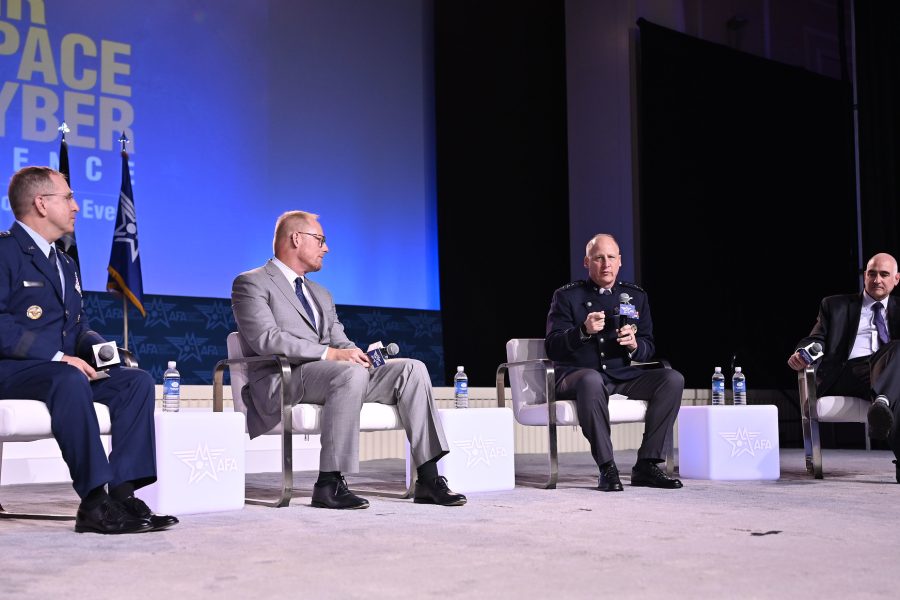NATIONAL HARBOR, Md.—With only a few weeks left before the Department of the Air Force begins fiscal 2025 without a new budget, leaders argued both the Air Force and Space Force are underfunded now and for the foreseeable future at pivotal moments for both services during AFA’s Air, Space & Cyber Conference on Sept. 16.
“As I look at our needs going forward, it is apparent to me that more resources will be required,” Secretary of the Air Force Frank Kendall said in a keynote address to open the event. “The Space Force is beginning a transformation that must be executed quickly and at scale. That takes resources. The Air Force must move to a new generation of more competitive capabilities as quickly as possible. That takes resources.”
Kendall has often expressed frustration with Congress’s delayed budgeting process; on a near-annual basis, lawmakers have used so-called continuing resolutions to keep the government from shutting down. The stopgap bills keep spending frozen at the previous year’s levels and prevent new programs from being started. Fiscal 2025 starts Oct. 1, and there is virtually no chance a new budget will get done before then.
Yet beyond the usual consternation over continuing resolutions, Kendall and other leaders went further in calling out a perceived funding shortfall for the department.
In summer 2023, lawmakers agreed to the Fiscal Responsibility Act, which limited defense spending to one percent growth in fiscal 2024 and 2025. Accounting for inflation, that has meant a real term decrease in the Department of Defense’s budget.
With a modest size and aggressive modernization plan, the Space Force has been hit particularly hard by those caps. The Space Force’s 2024 budget, as enacted by Congress, was around $29 billion, less than the Biden administration requested. In fiscal 2025, the service is requesting $29.4 billion.
“We have the smallest budget and the largest [area of responsibility,]” Vice Chief of Space Operations Gen. Michael A. Guetlein said. “We need people and we need money. And right now, being the smallest service, we’re struggling to get the resources we need to do the modernization that you need, but also to buy the new kit, the leading edge kit, to get after the threat that is accelerating at an exponential space.”
Guetlein said there is a solution to keep the U.S. ahead of China and Russia, which he warned were catching up to America in space: “What we’ve got to do is invest and invest to a point that we can stop that gap from closing, but reverse that gap.”
The budget crunch is also hurting the Air Force, which is responsible for the massive Sentinel intercontinental ballistic missile program, not to mention its new B-21 Raider and its paused Next-Generation Air Dominance fighter
Price was a key driver of the NGAD decision. Kendall told reporters Sept. 16 that the service wants to buy an NGAD fighter, envisioned initially to cost multiple hundreds of millions of dollars, but for the price of an F-35, which costs around $80 million. Whether the Air Force can afford an advanced new jet is just one of the many tough choices the service faces in the next few years, its No. 2 officer said.
“It essentially comes down to it comes down to military personnel, modernization, or readiness. Those are the trades. The challenge with modernization is you have to pay for it somehow,” Vice Chief of Staff of the Air Force Gen. James C. Slife said. “We know what we have to do. That’s not a particular mystery. … We don’t want to hollow force. The very difficult work in deciding how to modernize is you either have to have more resources, to Secretary Kendall’s point, or you have to make very difficult choices within the resources you have.”

